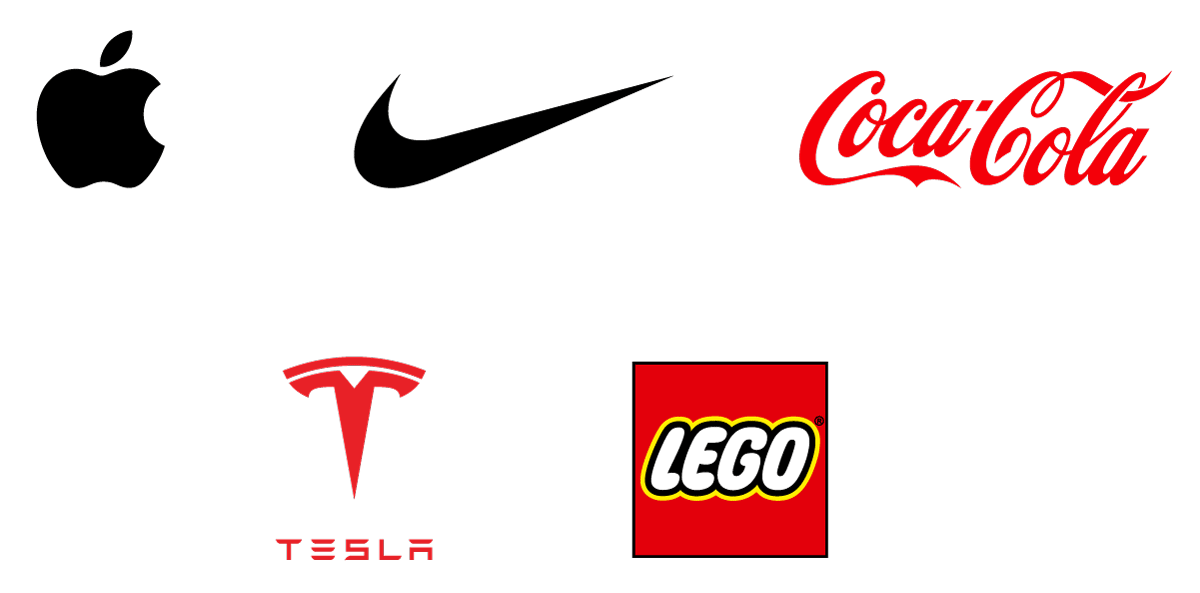Have you ever found yourself irrationally defending your favourite brand in a debate? Maybe you’re the kind of person who would never switch from Apple to Android, who refuses to drink anything other than Coca-Cola, or who swears by Nike when it comes to sports gear.
We all have brands we love—not just like, but love. And that love isn’t just about the quality of a product or its price. It’s about something deeper, more personal.
But why do we feel such strong emotional connections to certain brands while remaining indifferent to others? Why do some brands make us feel seen, inspired, or even empowered, while others are just another name on the shelf?
The answer lies in the magic of Love Brands—brands that tap into our emotions, our aspirations, and even our sense of identity.
What is a love brand?
Imagine walking into your favorite coffee shop. You don’t just go there because the coffee is good—you go because it feels like home. The barista knows your order, the music matches your mood, and the space makes you feel at home.
That feeling is what Love Brands create, but on a much larger scale.
The term Love Brand was first introduced by Kevin Roberts, the former CEO of Saatchi & Saatchi, in his book “Lovemarks: The Future Beyond Brands” (2004). He argued that brands must go beyond logic and functionality to create deep emotional bonds with their customers. A Love Brand is not just a company—it’s a relationship. People don’t just buy from Love Brands; they connect with them. They trust them, advocate for them, and remain loyal to them no matter what.
Why do we love some brands and not others?
Love is a funny thing—it’s rarely logical. It’s about emotions, shared experiences, and the feeling that this is meant for me. The same is true for Love Brands. Here’s why they stand out:
1. They make us feel something
Think about the last time you saw a really great ad. Did it give you chills? Make you smile? Love Brands go beyond selling products—they tell stories that touch our hearts. Nike’s Just Do It isn’t just about sneakers; it’s about the spirit of perseverance. Apple’s Think Different isn’t just about computers; it’s about creativity and rebellion against the status quo. These brands make us feel inspired, understood, and empowered.
2. They reflect who we are
We don’t just buy products—we buy identities. Driving a Tesla isn’t just about having an electric car; it’s about showing you care about innovation and sustainability. Wearing Nike signals determination and ambition. Love Brands resonate with our aspirations and values, making them feel personal.
3. They create a sense of belonging
Think about Apple fans camping outside stores for the latest iPhone release. Or Harley-Davidson riders forming biker communities.
Love Brands don’t just have customers—they have tribes. They make people feel like they’re part of something bigger. When you buy from a Love Brand, you don’t just get a product—you get a community.
4. They tell stories that stick
Humans are wired for storytelling. The brands we love don’t just talk about their products—they tell stories that resonate.
Think of Coca-Cola’s holiday commercials that instantly bring a sense of warmth and nostalgia. Or how LEGO fuels the imagination, reminding adults and children alike that creativity has no limits.
Love Brands don’t sell what they do; they sell why they do it.
5. They are consistent and reliable
Love is built on trust. We fall in love with brands that deliver great experiences, every time. Whether it’s the taste of a McDonald’s burger, the seamless user experience of an iPhone, or the reliability of Amazon’s next-day delivery, consistency is key.
When we trust a brand to meet our expectations again and again, it stops being just a brand—it becomes part of our lives.
What does it take to be a Love Brand?
So, how does a brand go from being just another name to something beloved? Here are the five must-haves:
1. Authenticity and purpose
Love Brands stand for something more than just making money. Patagonia isn’t just about selling jackets—it’s about protecting the environment.
Consumers today crave brands that are real, ethical, and purposeful. If a brand feels fake or opportunistic, it will never win true love.
2. Emotional storytelling
A good Love Brand doesn’t just advertise—it tells a story. And great stories create emotional connections that keep customers coming back.
3. Community and engagement
People want to feel connected to brands they love. Whether it’s social media engagement, events, or customer-driven campaigns, the best brands turn their customers into active participants, not just buyers.
4. Exceptional customer experience
Love Brands treat their customers like VIPs. They go the extra mile—whether it’s personalized recommendations, surprise gifts, or lightning-fast support.
5. Consistency and trust
A Love Brand is a promise kept. It delivers high-quality, reliable experiences every single time. Customers should feel like they know exactly what to expect—and that they can count on it.
The world’s most beloved love brands
Apple – More than a tech company, Apple is a cultural icon. Its sleek design, minimalist branding, and user-friendly experience make it the ultimate Love Brand.
Nike – Nike doesn’t just sell shoes—it sells motivation and achievement. Its marketing campaigns are legendary, inspiring millions to chase their goals.
Coca-Cola – This brand is built on nostalgia and happiness. Every sip feels like a moment of joy, reinforced by decades of iconic storytelling.
Tesla – Tesla isn’t just about cars—it’s about a vision for the future. Fans of the brand don’t just drive Teslas; they believe in Elon Musk’s mission.
LEGO – A timeless Love Brand that taps into the power of imagination. LEGO fans aren’t just customers—they’re part of a worldwide creative community.

Source: Wikimedia Commons
How to turn your brand into a Love Brand
Creating a Love Brand isn’t about luck—it’s about strategy, emotion, and consistency. It requires brands to go beyond selling products or services and instead focus on building relationships with their customers. People don’t just want to buy from companies; they want to connect with brands that understand them, inspire them, and make them feel valued.
Here’s how you can transform your brand into one that people don’t just like—but truly love.
1. Find your purpose: Stand for something bigger
Love Brands aren’t just successful businesses; they have a soul. They stand for something beyond profit, whether it’s sustainability, empowerment, creativity, or community.
Ask yourself:
- Why does your brand exist beyond making money?
- What problem do you solve in a way no one else does?
- What values define your brand?
Example: Patagonia
Patagonia doesn’t just sell outdoor gear; it’s a mission-driven brand committed to environmental conservation. Their customers don’t just buy jackets—they support a cause they believe in. By donating profits to sustainability initiatives and actively fighting climate change, Patagonia has earned not just customers, but die-hard fans.

Source: Wikimedia Commons
Your brand must stand for something that resonates deeply with your audience.
2. Tell a compelling story that sparks emotion
People don’t fall in love with facts and features—they fall in love with stories. A great brand story creates an emotional connection, making your brand feel more human and relatable.
Your story should:
- Be authentic—don’t fake emotions; people will see through it.
- Evoke feelings—joy, nostalgia, inspiration, or even rebellion.
- Make the customer the hero—show how your brand helps them achieve something meaningful.
Example: Nike
Nike doesn’t just sell sneakers—it sells the spirit of perseverance. Their Just Do It campaign isn’t about shoes; it’s about defying the odds, pushing limits, and believing in yourself. When people buy Nike, they aren’t just buying gear—they’re buying into a mindset.

Source: Wikimedia Commons
What is the emotional hook of your brand’s story?
3. Engage and listen: build a community, not just a customer base
Love Brands don’t just talk at their customers—they start conversations, create interactions, and make people feel heard.
- Use social media to foster real engagement—respond to comments, ask questions, and celebrate your customers.
- Encourage user-generated content—people love seeing real customers featured in a brand’s marketing.
- Reward loyalty—personalized emails, exclusive offers, or even just a heartfelt thank-you message can go a long way.
Example: Starbucks
Starbucks mastered personalization and engagement with its rewards program and the famous “Write Your Name on the Cup” initiative. It’s a simple act, but seeing your name handwritten makes the experience feel personal and special.

Source: Wikimedia Commons
How are you making your customers feel valued and included?
4. Deliver exceptional experiences at every touchpoint
Falling in love with a brand doesn’t happen in one interaction—it’s built over consistent, positive experiences. Customers should feel delighted every time they interact with you, whether online, in-store, or through customer support.
Ask yourself:
- Is your website easy to navigate?
- Is your packaging exciting and memorable?
- Do your customer service interactions make people feel heard and appreciated?
Example: Apple
From the sleek packaging to the in-store Genius Bar experience, Apple turns every customer interaction into an event. They understand that people don’t just buy products—they buy experiences.

Source: Wikimedia Commons
How can you make every brand interaction feel special?
5. Be consistent: Trust and love are built over time
Love isn’t built overnight—it takes time, consistency, and reliability. Love Brands show up again and again, delivering on their promises without fail.
- Consistency in messaging – Your tone of voice, visual identity, and values should be clear across all platforms.
- Consistency in quality – Customers should know exactly what to expect from your brand every time.
- Consistency in purpose – Stay true to your values, even when it’s difficult.
Example: Coca-Cola
Coca-Cola has been associated with happiness and nostalgia for decades. Their branding, messaging, and taste remain consistent, making customers feel a sense of comfort and familiarity every time they take a sip.

Source: Wikimedia Commons
If your brand disappeared tomorrow, would customers truly miss it?
6. Surprise and delight: Create moments of joy
Love Brands don’t just meet expectations—they exceed them in unexpected ways. Surprise your customers with small but meaningful gestures that make them feel valued.
Ways to surprise and delight:
- A handwritten note with an online order.
- A limited-edition product or special perk for loyal customers.
- A personalized email recognizing a customer’s milestone (birthday, anniversary with your brand, etc.).
Example: Zappos
Zappos, the online shoe retailer, is famous for delighting customers with unexpected surprises—like free overnight shipping, personalized customer service, and even sending flowers to a loyal customer in need.

Source: Zappos website
How can you make customers feel like VIPs?
7. Stand for something and take a stand when it matters
Today’s consumers want brands that don’t just sell but also speak up. Whether it’s sustainability, diversity, or social justice, Love Brands take real action to support the causes they care about.
Example: Ben & Jerry’s
Ben & Jerry’s isn’t afraid to take a stand on social and political issues. Their commitment to activism has created an incredibly loyal fan base that loves them not just for their ice cream, but for their values and boldness.

Source: Wikimedia Commons
What does your brand believe in, and how do you show it?
8. Make Customers Feel Like They Are Part of the Brand’s Journey
People don’t just want to buy from brands—they want to be part of them. Involve your customers in your journey, whether through behind-the-scenes content, sneak peeks, or co-creating new ideas.
Example: LEGO
LEGO involves its customers directly in product creation through the LEGO Ideas platform, where fans submit their own designs. Winning ideas get turned into real LEGO sets, making customers feel like they helped shape the brand.

Source: Wikimedia Commons
How can you make your customers feel like co-creators, not just consumers?
Final thoughts: Love is the ultimate business advantage
Love Brands don’t just sell products; they create meaningful relationships with their customers. They inspire loyalty, build communities, and make people feel something real.
At Admind Agency, we help brands forge emotional connections that drive loyalty, engagement, and growth. Want to build a brand that people don’t just buy from—but truly love?
Let’s make it happen together!



